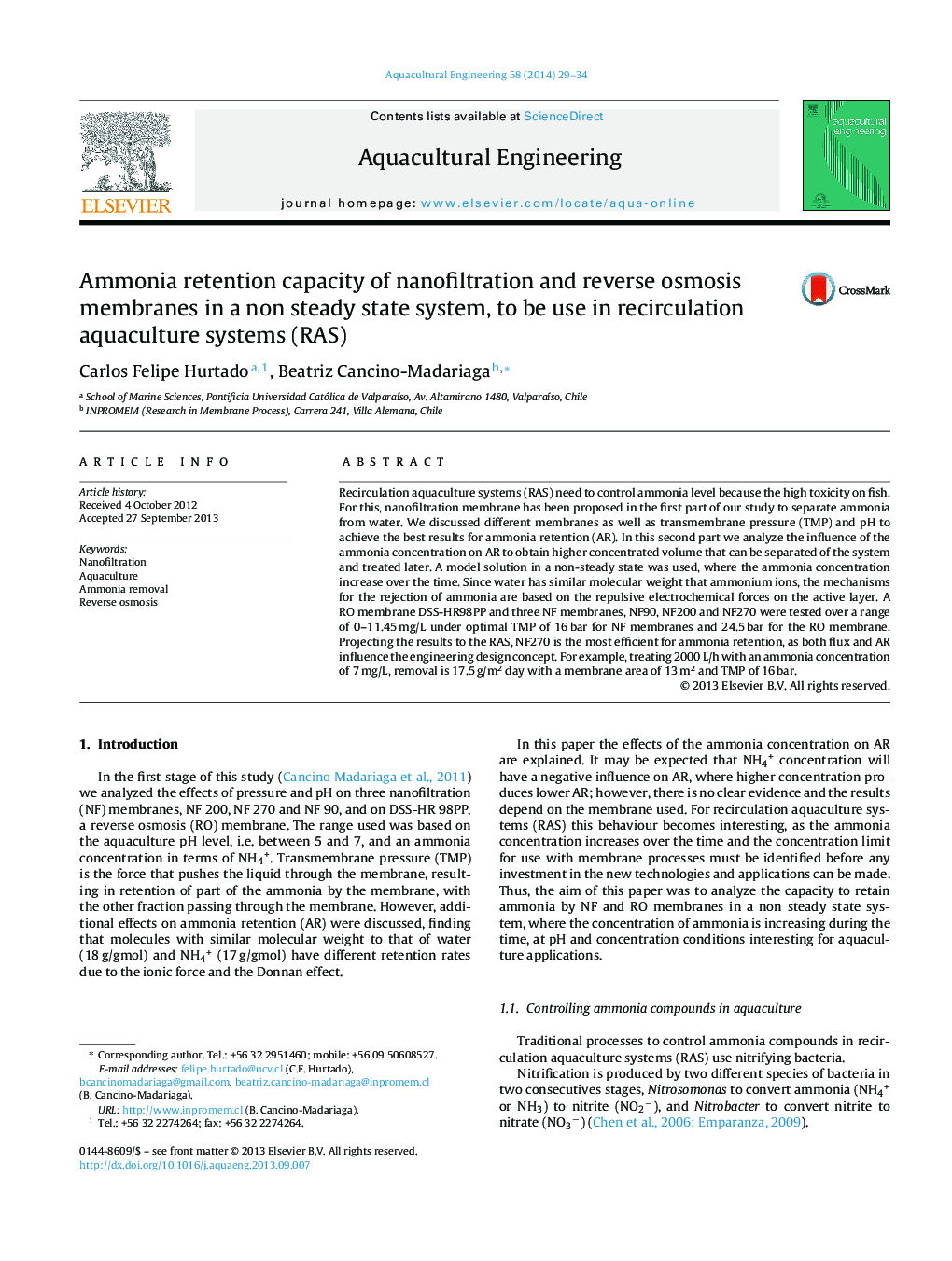| Article ID | Journal | Published Year | Pages | File Type |
|---|---|---|---|---|
| 4527203 | Aquacultural Engineering | 2014 | 6 Pages |
•This paper studies the ammonium retention (AR) using NF membranes for aquaculture.•The influence of ammonium concentration on AR was studied with three NF membranes.•The idea is applying in a recirculation aquaculture system (RAS).•The tests were performed with the ammonium model solution from 0 to 14 mg/L at 16 bar.•In a simulated RAS application, NF270 is the most efficient for ammonium retention.
Recirculation aquaculture systems (RAS) need to control ammonia level because the high toxicity on fish. For this, nanofiltration membrane has been proposed in the first part of our study to separate ammonia from water. We discussed different membranes as well as transmembrane pressure (TMP) and pH to achieve the best results for ammonia retention (AR). In this second part we analyze the influence of the ammonia concentration on AR to obtain higher concentrated volume that can be separated of the system and treated later. A model solution in a non-steady state was used, where the ammonia concentration increase over the time. Since water has similar molecular weight that ammonium ions, the mechanisms for the rejection of ammonia are based on the repulsive electrochemical forces on the active layer. A RO membrane DSS-HR98PP and three NF membranes, NF90, NF200 and NF270 were tested over a range of 0–11.45 mg/L under optimal TMP of 16 bar for NF membranes and 24.5 bar for the RO membrane. Projecting the results to the RAS, NF270 is the most efficient for ammonia retention, as both flux and AR influence the engineering design concept. For example, treating 2000 L/h with an ammonia concentration of 7 mg/L, removal is 17.5 g/m2 day with a membrane area of 13 m2 and TMP of 16 bar.
